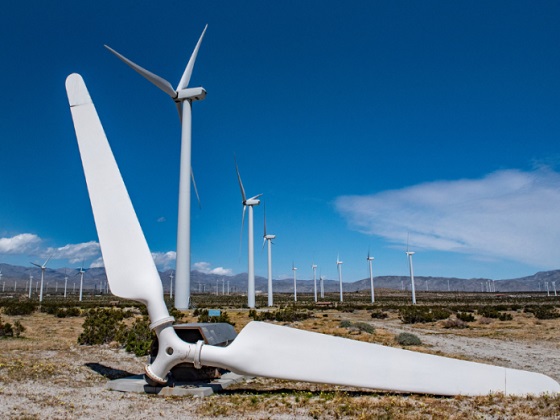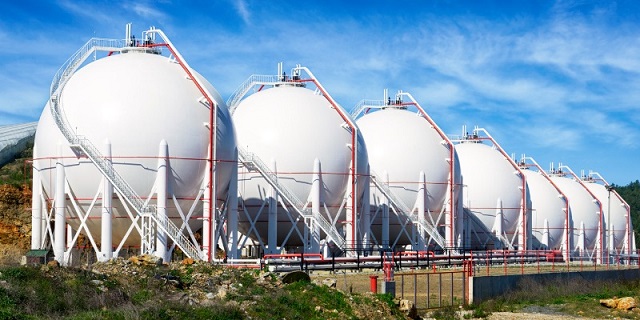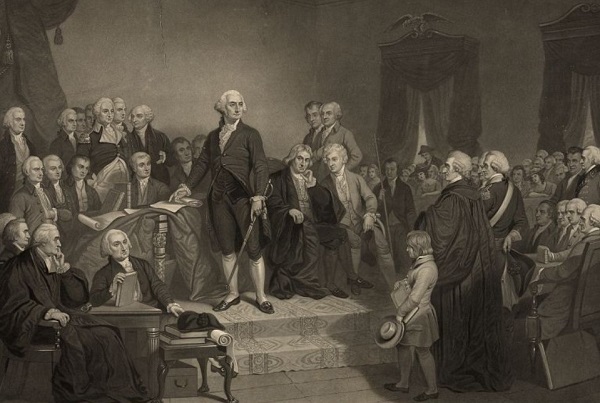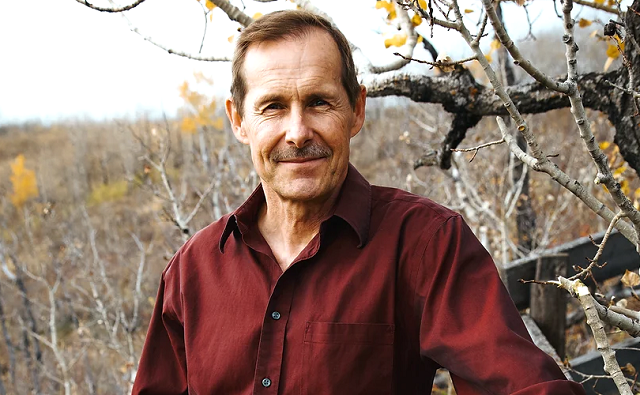Energy
Mark Ruffalo, Hollywood filmmakers wrong about Canadian energy, RBC

Hollywood actors Mark Ruffalo, Rachel McAdams and Joaquin Phoenix are pressuring TIFF to remove RBC as a sponsor because of the bank’s support for Canadian oil and gas. Getty Images photos
From the Canadian Energy Centre
By Deborah JaremkoThey say RBC is not a ‘worthy source of financing’ for Canadian film because of its ongoing support for Canadian oil and gas. They are wrong
A group of Hollywood filmmakers including Mark Ruffalo, Joaquin Phoenix and Rachel McAdams is calling on the Toronto International Film Festival (TIFF) to drop RBC as its main sponsor.
They say RBC is not a “worthy source of financing” for Canadian film because of its ongoing support for Canadian oil and gas. They claim RBC is fueling climate change and disrespecting Indigenous rights.
They are wrong.
RBC is helping fund climate solutions while enabling Indigenous self-determination and prosperity. And Indigenous communities do not want Hollywood to speak for them.
Here are the facts.
Fact: RBC primarily funds Canadian oil and gas, and the world needs more Canadian oil and gas – not less
The world’s growing population needs access to reliable, affordable, responsibly produced energy. And a lot more of it.
According to the United Nations, last November the global population reached 8 billion people, just over a decade after hitting the landmark 7 billion in 2011. Driven by India and China, the world’s population is projected to reach 8.5 billion in 2030 and 9.7 billion 2050.
All those people need energy. Many don’t even have it today, with about 775 million without access to electricity last year, according to the International Energy Agency (IEA).
Even with accelerating investment in low carbon energy resources, the world’s consumption of oil, gas and coal is as high or higher than it has ever been, with both oil and coal demand reaching new records this year, the IEA reports.
The agency projects the world’s total energy consumption – which increased by 15 per cent over the last decade – will increase by a further 24 per cent by 2050.
On the world’s current trajectory, the IEA says oil, gas and coal will account for 62 per cent of world energy supply in 2050, compared to 78 per cent in 2021.
As IEA executive director Fatih Birol said last year, “We will still need oil and gas for years to come… I prefer that oil is produced by countries like Canada who want to reduce the emissions of oil and gas.”
Canada has been a cornerstone of global energy markets and a reliable partner for years, he said.
Fact: Coastal GasLink will help reduce emissions
The Hollywood activists take issue with RBC’s funding of the Coastal GasLink pipeline. This is nonsensical because the project can help reduce emissions in Asia. It also has the support of and is benefiting Indigenous communities.
One of the fastest and most effective ways to reduce emissions is to switch from coal-fired power to power generated from natural gas, traded globally as LNG.
Consider that between 2005 and 2019, emissions from the U.S power sector dropped by 32 per cent because of coal-to-gas switching, according to the U.S. Energy Information Administration.
The LNG Canada project – supplied with Canadian natural gas via Coastal GasLink – will have among the world’s lowest emissions intensity, at 0.15 per cent CO2 per tonne compared to the global average of 0.35 per cent CO2 per tonne, according to Oxford Energy Institute.
Natural gas from LNG Canada alone could reduce emissions in Asia by up to 90 million tonnes annually, or the equivalent of shutting down up to 60 Asian coal plants, the project says. That’s also a reduction of more than the entire emissions of the province of British Columbia, which were 64 million tonnes in 2022.
Expanding Canada’s LNG exports to Asia could reduce emissions by 188 million tonnes per year, or the annual equivalent of taking all internal combustion engine vehicles off Canadian roads, according to a 2022 study by Wood Mackenzie.
“It is a disservice to take the choice of Canadian LNG away from those that need it,” Billy Morin, former chief of the Enoch Cree Nation, said earlier this year.
Fact: Coastal GasLink benefits Indigenous communities
The Coastal GasLink pipeline is enabling shared prosperity between Indigenous communities and Canada’s energy industry.
Not only will it connect to the LNG Canada terminal on the traditional lands of the Haisla Nation – where the project has been transformational for the community, according to Chief Councillor Crystal Smith – but it will also provide natural gas for the proposed Cedar LNG project, in which the Haisla Nation is 50 per cent owner.
“Cedar is not only important from a Haisla perspective, [but from] a global perspective,” Smith says.
“Our territory is not in a bubble and protected from what is happening in Asia and India with coal burning.”
Sixteen First Nations will become 10 per cent owners of the Coastal GasLink pipeline itself once it is completed.
And so far, LNG Canada and Coastal GasLink together have spent more than $5.7 billion with Indigenous-owned and local businesses.
“When there is foreign interference, especially from high-profile celebrities like Ruffalo, it sets us back. He does not think beyond the pipeline. He does not think beyond the cause of the day,” Indigenous policy analyst Melissa Mbarki wrote following a previous attack on Coastal GasLink by the actor.
“Over the long term, such actions serve to drive away investment and keep Indigenous communities in poverty. We are dealing with so many social issues, including high rates of suicide, incarceration and homelessness. Speaking on our behalf is not the answer if you fail to acknowledge the entire story.”
Fact: Indigenous communities speak with their own voices
Ruffalo is a prominent activist against the Coastal GasLink pipeline, often spreading misinformation about the project’s relationship with Indigenous communities. But they are fighting back.
“Hollywood celebrities from outside of Canada are actively campaigning against the Coastal GasLink project, claiming Indigenous People do not support it. However, 20 elected First Nations governments along the route do support it,” the Indigenous Resource Network said in a statement last year.
“Hollywood celebrities are standing in the way of us being able to make our own decisions. Their main goal is to push their agenda and use us as talking points; ultimately, communities are left to pick up the pieces.
“Although their intentions may be to help Indigenous people in Canada, this can be best done by allowing our people to use their own voices. We are able to decide for ourselves what is best for ourselves and our communities.”
Fact: The film industry has its own emissions to deal with
Rather than campaign against Canadian energy projects that can help reduce emissions and foster prosperity for Indigenous communities, Hollywood film makers could be better served addressing the emissions in their own backyard.
A 2020 study by the British Film Institute analyzing the emissions associated with producing movies in the U.S. and U.K. found that films with a budget of $70 million or over generate an average 2,840 tonnes of CO2 pollution.
Air travel alone to support a movie production of this scale generates equivalent emissions of flying one way from London to New York 150 times, BFI said.
Energy
Buckle Up for Summer Blackouts: Wind Is Already Failing Texas in Spring

From Heartland Daily News
By Jason Isaac
When the wind blows too much, natural gas plants are forced to shut down because they can’t underbid wind producers that can bid zero or negative. But when the wind doesn’t blow when it is needed, wind generators can afford the loss of revenue because they earn so much from tax subsidies.
It’s been all quiet on the electric grid front for a few months — but don’t get your hopes up. Over the last month, electricity prices came near the $5000/MWh regulatory cap three separate times because the wind wasn’t blowing enough when the sun went down.
If this sounds familiar, you’re not wrong.
You may hear from the drive-by media that the problem is unseasonably warm temperatures, or that there are a lot of power plants down for maintenance. But high 80s in April and low 90s in May are not unusual, and the Texas grid used to manage these weather changes with no problems. From 2014 to 2016, real-time prices only went over $1000/MWh twice, but it’s happened three times already this year.
If the grid is already on shaky ground, with many weeks to go before blistering triple-digit temperatures shoot electric demand through the roof, all signs are pointing to an unpleasant summer.
The problem with the Texas grid is so simple it’s infuriating: Relying too heavily on unpredictable wind and solar, without enough reliable reserve capacity, means higher volatility — leading to higher prices and increasing need for expensive interventions by ERCOT to avoid outages. This is why your electric bill is going up and up even though wind and solar are supposed to be cheap.
While Texas certainly has a lot of sun, peak solar output almost never aligns with peak electric usage. The Lone Star State also has plenty of wind, but wind generation is wildly unpredictable — by nature. It’s not unusual for a wind generator’s output to swing 60 percentage points or more in a single week.
Take last month, for example. On Tuesday, April 16, electricity prices reached their cap because ERCOT’s day-ahead wind forecast was off by 50%. Five gigawatts of wind we were counting on to power Texas as the sun went down didn’t show up. That was the equivalent of simultaneously shutting down 10 large natural gas units, or all of the state’s nuclear capacity. If the latter occurred, the news media would be up in arms (and rightfully so). But because the culprit was the political darling of both the left and the right, no one heard about it.

ERCOT hasn’t been the best at predicting wind output, and the problem isn’t entirely its fault. Wind veers so wildly between extremes it’s nearly impossible to plan a sustainable grid around its fickleness — yet wind makes up 26% of our generating capacity.
It’s all because lucrative tax breaks and subsidies at the state and federal level, combined with flaws in ERCOT’s market design, make it almost impossible for wind to lose money — and harder than ever for natural gas to compete, even though it’s far more reliable and affordable. When the wind blows too much, natural gas plants are forced to shut down because they can’t underbid wind producers that can bid zero or negative. But when the wind doesn’t blow when it is needed, wind generators can afford the loss of revenue because they earn so much from tax subsidies.
Imagine trying to open a restaurant when your competitor next door is paying its customers to eat there. It’s no wonder natural gas capacity in ERCOT has barely grown over the past decade, and not enough to make up for losses of coal plants, while demand has been steadily increasing.
All those subsidies are hurting our most reliable, affordable energy producers and putting our economy at risk — leaving you and me, the taxpayers on the hook.
While most political issues are far more complex and nuanced than brazen attack ads and headlines would lead you to believe, in this case, it really does boil down to one simple problem.
And it would be easy to solve — if lawmakers are willing to go against the grain of political correctness and set a clear reliability standard for the wind and solar generators that want to connect to our grid.
Unfortunately, that’s a gargantuan “if.”
As a former lawmaker, I understand the pressures our legislators are under to toe the line on alternative energy. Major utilities embracing World Economic Forum- and United Nations-aligned “energy transition” policies that seek to redefine what’s “clean” and what’s “pollution” are making matters worse. And the incessant misinformation from their well-funded lobby that promise rural “economic development” and “cheap energy” sound too good to be true, because they are.
Elected officials don’t serve the lobby. They serve Texans — or, at least, they should.
And Texans want a reliable, affordable grid. They want to not have to worry about losing power in the heat of the summer or the dead of winter. The Legislature must put a stop to these market-distorting subsidies and make reliability, not popularity, the priority for our electric grid.
Gov. Greg Abbott sent a letter on July 6, 2021 to members of the Public Utility Commission of Texas (PUC) directing them to “take immediate action to improve electric reliability across the state.” The second directive was to “Allocate reliability costs to generation resources that cannot guarantee their own availability, such as wind or solar power.” Unfortunately, the PUC hasn’t acted on this directive or even studied it. The costs of scarcity on the grid are estimated to have exceeded $12B in 2023, which is equal to two-thirds of the property tax relief passed in the 88th Legislature, all paid for by ratepayers.
“Unfortunately for Texans, the ERCOT grid is moving from a single grid with gas and coal power plants running efficiently all day to two grids: one for wind and solar and one for expensive backup power that fills in the gaps when there is not enough wind and sun,” says Dr. Brent Bennett, policy director for Life:Powered at the Texas Public Policy Foundation. “Every time these scarcity events occur, whether due to real scarcity or artificial scarcity created by ERCOT’s operating policies, ratepayers are shelling out tens to hundreds of millions of dollars for backup power. It is the most expensive way to operate a grid, and Texans will feel the bite as these costs are absorbed over time.”
The Californication of our grid is unfolding before our eyes. If the Legislature and the PUC don’t act fast, the Texas miracle won’t last.
The Honorable Jason Isaac is CEO of the American Energy Institute and a senior fellow at the Texas Public Policy Foundation. He previously served four terms in the Texas House of Representatives
Energy
Federal government continues to reject golden opportunities to export LNG

From the Fraser Institute
By Julio Mejía and Elmira Aliakbari
A recent report released by the National Bank of Canada underscores the potential environmental impact of transitioning from coal to natural gas in countries such as India. According to the report, by 2030 the cumulative effect of this transition would result in up to four times fewer greenhouse gases emissions than what Canada emitted in 2021.
Once again, Canada has missed a crucial opportunity to supply clean and reliable energy to an ally. Polish President Andrzej Duda recently expressed interest in purchasing Canadian liquefied natural gas (LNG) from Canada but the Trudeau government did not offer any concrete commitment in response. We’ve seen this movie before.
During his recent visit to Ottawa, Greek Prime Minister Kyriakos Mitsotakis received the same noncommitment. In January 2023, Japanese Prime Minister Fumio Kishida came to Canada hoping to secure a reliable energy source. In response, Trudeau expressed the importance of Canada as a global energy supplier, only to add the disclaimer that the world is “aggressively” moving towards decarbonization. And in 2022, after Putin’s invasion of Ukraine led Germany to seek ways to reduce its reliance on Russian energy sources, German Chancellor Olaf Scholz asked to buy Canadian LNG but the prime minister gave him the cold shoulder. Apparently, Trudeau found no compelling “business case” to export LNG to Europe’s largest economy.
Of course, Canada’s vast natural resources could make a significant positive impact on global energy security, reliability and emissions reduction by reducing reliance on coal while also creating jobs and economic opportunity here at home. Energy supply shortages have already forced European countries to revert to coal-fired power plants—coal contributes more CO2 emissions per unit of energy than natural gas. In the developing world, India aims to double coal production by 2030 to meet the demands of its burgeoning economy and population. Similarly, China quadrupled the amount of new coal power in 2022 and has six times as many plants under construction as the rest of the world combined.
A recent report released by the National Bank of Canada underscores the potential environmental impact of transitioning from coal to natural gas in countries such as India. According to the report, by 2030 the cumulative effect of this transition would result in up to four times fewer greenhouse gases emissions than what Canada emitted in 2021. To put that in perspective, the impact would be even bigger than completely shutting down the Canadian economy.
Moreover, a recent McKinsey report anticipates an annual increase in global LNG demand of 1.5 per cent to 3 per cent by 2035. And according to the latest report by the International Energy Agency (IEA), limited new LNG production means supply will remain tight. The Biden administration recently halted LNG project approvals, increasing the need for Canada to establish its own infrastructure if we’re to seize the opportunity and become a global LNG supplier.
Unfortunately, Canada currently has no operational LNG export terminals, with the first LNG facility expected to commence exporting by 2025. The Trudeau government has frustrated the development of other LNG terminals, primarily through government regulatory barriers including long approval timelines. The government’s emissions caps on the oil and gas sector and federal Bill C-69 (which added more red tape and complexity to the assessment process for major energy projects) have also created uncertainty and deterred—if not outright prohibited—investment in the sector. Additionally, the British Columbia government’s “CleanBC” plan to reduce greenhouse gas emissions has added more regulation. Not surprisingly, a recent survey revealed that investors identify regulatory uncertainty as a major deterrent to investment in Canada’s oil and gas sector.
With the proper polices in place, Canada could provide an energy alternative to our allies and other coal-consuming countries worldwide. The Trudeau government should acknowledge the environmental benefits of our natural gas resources, reform regulations for energy infrastructure projects so they’re more competitive, and allow our energy industry to be a leading source of clean and reliable energy, for the benefit of Canadians and the environment.
Authors:
-

 Opinion2 days ago
Opinion2 days agoBoy Scouts of America changes name to ‘Scouting America’ to be ‘more inclusive’
-

 Brownstone Institute1 day ago
Brownstone Institute1 day agoMedical Elites’ Disgrace Over Ivermectin
-

 Opinion1 day ago
Opinion1 day agoThe American Experiment Has Gone Down In Flames
-

 COVID-191 day ago
COVID-191 day agoThe New York Times Admits Injuries from COVID-19 Shots
-

 Energy1 day ago
Energy1 day agoFederal government continues to reject golden opportunities to export LNG
-

 conflict1 day ago
conflict1 day ago‘It Makes No Sense’: Experts Puzzled By Biden Admin’s Claim That Rafah Invasion Wouldn’t Help Israel Defeat Hamas
-

 Bruce Dowbiggin1 day ago
Bruce Dowbiggin1 day agoWhy Do The Same Few Always Get The Best Sports Scoops?
-

 Energy23 hours ago
Energy23 hours agoBuckle Up for Summer Blackouts: Wind Is Already Failing Texas in Spring








